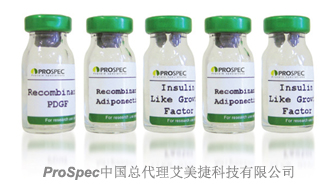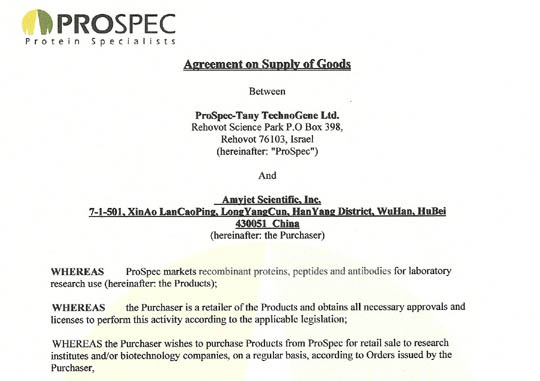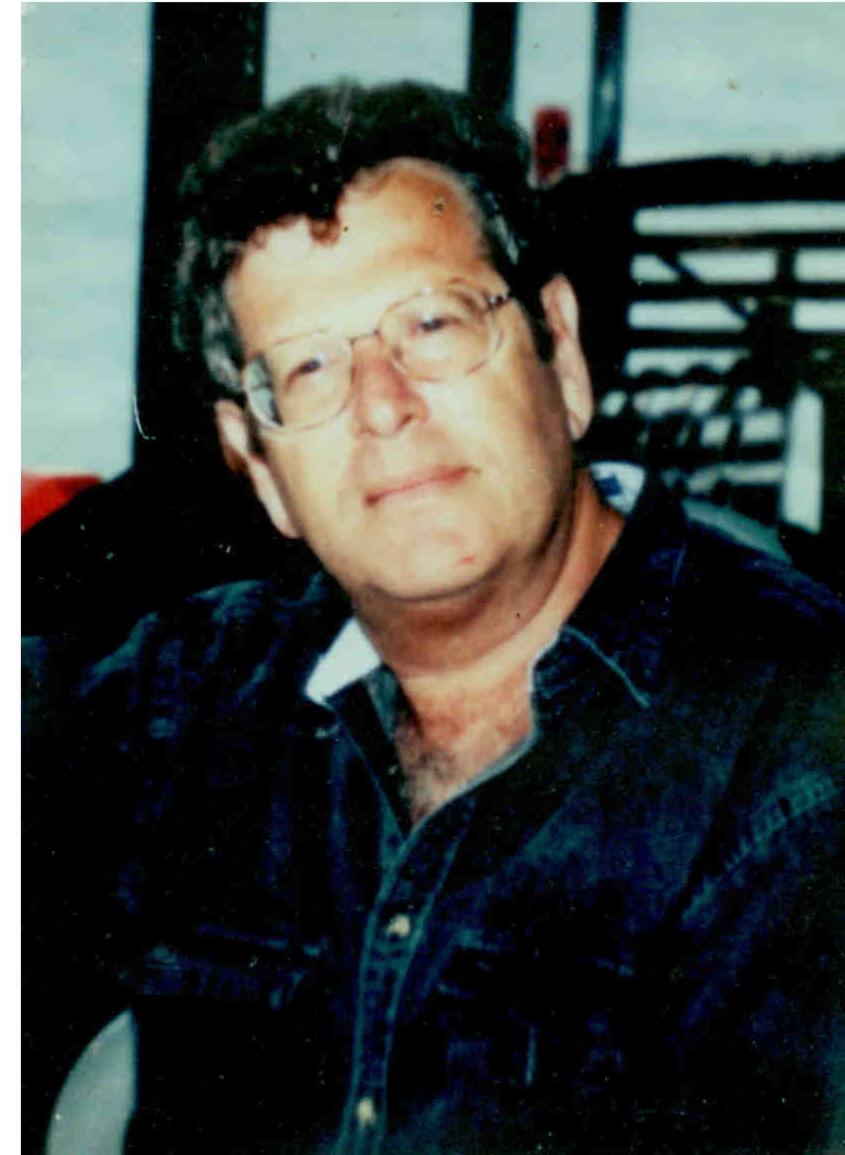
Catalogue number
CYT-205
Synonyms
IFN alpha 2b, IFNA, INFA2, MGC125764, MGC125765.
Introduction
IFN-alpha is produced by macrophages and has antiviral activities. IFN stimulates the production of two enzymes: protein kinase and an oligoadenylate synthetase.
Description
IFN-a 2b Human Recombinant produced in E.Coli is a single, non-glycosylated, polypeptide chain containing 166 amino acids and having a molecular mass of 19400 Dalton. The difference between IFNA2A and IFNA2B is in the amino acid present at position 23. IFN-alpha 2a has a lysine at that position 23 while IFN-alpha 2b has arginine.
The IFN-alpha 2b gene was obtained from human leukocytes.
The IFN-a 2b is purified by proprietary chromatographic techniques.
Source
Physical Appearance
Formulation
Solubility
It is recommended to reconstitute the lyophilized IFN-alpha 2b in sterile 18MΩ-cm H2O not less than 100µg/ml, which can then be further diluted to other aqueous solutions.
Stability
Lyophilized IFN although stable at room temperature for 3 weeks, should be stored desiccated below -18°C. Upon reconstitution IFN alpha 2b should be stored at 4°C between 2-7 days and for future use below -18°C.For long term storage it is recommended to add a carrier protein (0.1% HSA or BSA).Please prevent freeze-thaw cycles.
Purity
Amino acid sequence
MCDLPQTHSL GSRRTLMLLA QMRRISLFSC LKDRHDFGFP QEEFGNQFQK AETIPVLHEM IQQIFNLFST KDSSAAWDET LLDKFYTELY QQLNDLEACV IQGVGVTETP LMKEDSILAV RKYFQRITLY LKEKKYSPCA WEVVRAEIMR SFSLSTNLQE SLRSKE
Biological Activity
Protein content
References
Title:IFN-β induces apoptosis in human SH-SY5Y neuroblastoma cells through activation of JAK–STAT signaling and down-regulation of PI3K/Akt pathway.Publication:Article first published online: 11 NOV 2010 DOI:10.1111/j.1471-4159.2010.07046.x © 2010 The Authors. Journal of Neurochemistry © 2010 International Society for Neurochemistry.Link:http://onlinelibrary.wiley.com/doi/10.1111/j.1471-4159.2010.07046.x/full
Usage
Safety Data Sheet
SDS
Background
IFN-alpha forms are produced by monocytes/macrophages, lymphoblastoid cells, fibroblasts, and a number of different cell types following induction by viruses, nucleic acids, glucocorticoid hormones, and low-molecular weight substances (n-butyrate, 5-bromodeoxy uridine). At least 23 different variants of IFN-alpha are known. The individual proteins have molecular masses between 19-26 kDa and consist of proteins with lengths of 156-166 and 172 amino acids. All IFN-alpha subtypes possess a common conserved sequence region between amino acid positions 115-151 while the amino-terminal ends are variable. Many IFN-alpha subtypes differ in their sequences at only one or two positions. Naturally occurring variants also include proteins truncated by 10 amino acids at the carboxy-terminal end. Disulfide bonds are formed between cysteines at positions 1/98 and 29/138. The disulfide bond 29/138 is essential for biological activity while the 1/98 bond can be reduces without affecting biological activity. All IFN-alpha forms contain a potential glycosylation site but most subtypes are not glycosylated. In contrast to IFN-gamma IFN-alpha proteins are stable at pH2.
There are at least 23 different IFN-alpha genes. They have a length of 1-2 kb and are clustered on human chromosome 9p22. It is not known whether all these genes are expressed following stimulation of the cells. In some cell systems expression of some subtypes (IFN-alpha-1, IFN-alpha-2, IFN-alpha-4) is stronger than those of others. IFN-alpha genes do not contain intron sequences found in many other eukaryotic genes (see also: gene expression). Based upon the structures two types of IFN-alpha genes, designated class 1 and II, are distinguished. They encode proteins of 156-166 and172 amino acids, respectively. Deletions covering 9p22 are observed frequently in cells of lymphoblastoid leukemias. It is not known to date whether this is of significance with respect to IFN expression.
The gene encoding the IFN-alpha receptor maps to human chromosome 21q22.1. IFN-alpha and IFN-beta are thought to bind to the same IFN binding subunit which is expressed in 100-5000 copies in IFN-alpha sensitive and -resistant cells and is associated with other as yet unidentified proteins. The IFN-omega (Omega IFN) also binds to the IFN-alpha/IFN-beta receptor. Another receptor expressed on B-lymphocytes is identical with CD21. This receptor also binds Epstein-Barr virus through its gp350/220 coat protein.Signal transduction mechanisms elicited after binding of IFN-alpha to its receptors involves tyrosine phosphorylation (see also: PTK; protein tyrosine kinase) of various non-receptor tyrosine kinases belonging to the Janus kinases. Soluble forms of the IFN-alpha receptor, corresponding to truncated forms of the extracellular domain of the cell surface IFN-alpha receptor, have been found in human serum and in normal human urine.
All known subtypes of IFN-alpha show the same antiviral antiparasitic, antiproliferative activities in suitable bioassays although they may differ in relative activities. Human IFN-alpha is also a potent antiviral substance in murine, porcine, and bovine cell systems. Human IFN-alpha is less active in rodent cells. Site-directed mutagenesis techniques have been used to create some variants of certain subtypes (IFN-alpha-2) that display approximately 100-fold enhanced antiviral activities in mouse cells.
ProSpec是一家全球著名细胞因子蛋白及相关抗体生产和研发品牌。ProSpec的生产和研发工厂位于以色列,专注于蛋白(重组及合成)生产研发,其独有的细菌和哺乳动物表达和蛋白折叠技术使其能在17年内成长为国际一流的科研级蛋白供应商。目前ProSpec可以提供细胞因子,生长因子,激素,信号蛋白,病毒抗原等近800种重组蛋白和100多种抗体,是世界上提供蛋白品种最多的公司之一,领先的生产工艺和规模使其可以提供毫克到克级蛋白,价格优于同类公司。绝大部分产品是天然成熟型蛋白,而不含有标签蛋白。考虑到大部分研究者希望能更灵活地配制蛋白溶液,ProSpec-Tany绝大部分产品没有添加保护剂或盐,这就对工艺提出了更高的要求。同时,ProSpec-Tany绝大部分产品为冻干粉,因此易于运输和保存。
ProSpec的生产和研发工厂位于以色列雷霍沃特(Rehovot),专注于蛋白(重组及合成)生产研发。目前ProSpec可以提供细胞因子,生长因子,激素,信号蛋白,病毒抗原等近800种重组蛋白和100多种抗体,是世界上提供蛋白品种最多的公司之一,领先的生产工艺和规模使其可以提供毫克到克级蛋白,价格优于同类公司。 欢迎各位ProSpec客户及合作伙伴拨打全国免费电话400-6800-868转801/802/803垂询蚂蚁淘科技问询相关产品及解决方案! 代理ProSpec细胞因子、生长因子、激素、病毒抗原等重组蛋白产品简介 为便于客户选购ProSpec公司的各种重组蛋白,特将选购及使用注意事项列举如下: 1、需要考虑细胞因子、生长因子的种属来源和表达细胞选择 ProSpec可以提供多种不同种属来源的细胞因子等重组蛋白,如白介素-3,可以提供人白介素-3、小鼠白介素-3、大鼠白介素-3;而瘦蛋白Leptin则有人源、小鼠源、大鼠源、绵羊源、猪源、河豚源、马源、鸡源、狗源、兔源等十多种不同Leptin。蚂蚁淘科技推荐,建议按照作用的细胞选择相同种属的细胞因子。不过不同种属之间,蛋白同源性(序列一致性)在80%以上的基本上就可确定为有交叉活性,可推荐使用。另外,蚂蚁淘还可以向您提供ProSpec不同种属细胞表达的细胞因子,以重组人血管内皮生长因子(rVEGF)为例,ProSpec可以提供大肠杆菌表达的、酵母Yeast表达的、中国仓鼠卵巢CHO细胞、人胚肾HEK细胞表达的VEGF。可以根据您的实验需求,垂询蚂蚁淘科技有限公司为您推荐不同细胞表达的细胞因子产品。 2、ProSpec细胞因子的溶解和保存建议 ProSpec绝大部分细胞因子产品是天然成熟型蛋白,而不含有载体蛋白(CarrierProtein)或其他添加剂(如BSA、HAS或蔗糖等)。同时,ProSpec-Tany绝大部分产品通常以最少量的盐来进行冻干处理,因此易于运输和保存。所以我们建议在收到产品后,务必在开盖前先离心,使粘在管盖或管壁上的蛋白聚集于管底(此时能否见到白色沉淀均属正常现象)。为获得更好生物活性和保存稳定性,请联系蚂蚁淘科技垂询相关的溶解以保存建议。 领先的生产工艺和规模使其可以提供毫克到克级蛋白,价格优于同类公司,而小包装形式的细胞因子也受广大研究生客户喜爱。作为ProSpec的中国总代理,蚂蚁淘科技有限公司为客户精选真核细胞表达、高活性的几十多种常用现货ProSpec细胞因子。更多细胞因子产品请查询蚂蚁淘网站或垂询蚂蚁淘科技有限公司。 


ebiomall.com






>
>
>
>
>
>
>
>
>
>
>
>
干扰素(Interferon,IFN),是由英国科学家Isaacs于1957年利用鸡胚绒毛尿囊膜研究流感病毒干扰现象时首先发现的,是一种细胞因子,具有抑制细胞分裂、调节免疫、抗病毒、抗肿瘤等多种作用。其本质是蛋白质,类型可分为α、β、γ、ω等几种。IFN能诱导细胞对病毒感染产生抗性,它通过干扰病毒基因转录或病毒蛋白组分的翻译,从而阻止或限制病毒感染,是目前最主要的抗病毒感染和抗肿瘤生物制品。
CristinaAlberini教授的个人主页:http://www.mountsinai.org/profiles/cristina-alberini
全文下载:
nature09667.pdf(558.65k)
单核吞噬细胞系统(mononeuclear phagocyte system)又称单核巨噬细胞系统,是高等动物体内具有强烈吞噬能力的巨噬细胞,及其前身细胞所组成的一个细胞系统,是机体防御结构的重要组成部分。
巨噬细胞细胞质内含丰富溶酶体、线粒体及粗糙内质网,细胞表面形成小突起和胞膜皱褶。静止时称固着巨噬细胞,有趋化因子时便成为游走巨噬细胞,能进行变形运动及吞噬活动。人的巨噬细胞能生活数月至数年。许多疾病能引起单核吞噬细胞系统大量增生,表现为肝、脾淋巴结肿大。功能为吞噬清除体内病菌异物及衰老伤亡细胞;活化T.B.淋巴细胞免疫反应。在细菌或其他因子刺激下能分泌酸性水解酶、中性蛋白酶、溶菌酶和其他内源性热原等。该系统包括单核细胞,结缔组织跟淋巴组织中的巨噬细胞、肝的库普佛细胞、肺的尘细胞、神经组织的小胶质细胞、骨组织的破骨细胞、表皮的朗格汉斯细胞和淋巴组织中的交错突细胞,单核细胞穿出血管壁进入其他组织中,分别分化为上述各种细胞。
(1)绝大多数细胞因子为分子量小于25kDa的糖蛋白,分子量低者如IL-8仅8kDa。多数细胞因子以单体形式存在,少数细胞因子如IL-5、IL-12、M-CSF和TGF-β等以双体形式发挥生物学作用。大多数编码细胞因子的基因为单拷贝基因(IFN-α除外),并由4-5个外显子和3-4个内含子组成。
(2)主要与调节机体的免疫应答、造血功能和炎症反应有关。
(3)通常以旁分泌(paracrine)或自分泌(autocrine)形式作用于附近细胞或细胞因子产生细胞本身。在生理状态下,绝大多数细胞因子只有产生的局部起作用。
(4)高效能作用,一般在pM(10-12M)水平即有明显的生物学作用。
(5)存在于细胞表面的相应高亲和性受体数量不多,在10-10000/每个细胞。细胞因子受体的研究进展相当迅速,根据细胞因子受体基因DNA序列以及受体胞膜外区氨基酸序列、同源性和结构,可分为四个类型:免疫球蛋白超家族、造血因子受体超家族、神经生长因子受体超家族和趋化因子受体。
(6)多种细胞产生,一种IL可由许多种不同的细胞在不同条件下产生,如IL-1除单核细胞、巨噬细胞或巨噬细胞系产生外,B细胞、NK细胞、成纤维细胞、内皮细胞、表皮细胞等在某些条件下均可合成和分泌IL-1。
(7)多重的调节作用(multipleregulatoryaction),细胞因子不同的调节作用与其本身浓度、作用靶细胞的类型以及同时存在的其它细胞因子种类有关。有时动物种属不一,相同的细胞因子的生物学作用可有较大的差异,如人IL-5主要作用于嗜酸性粒细胞,而鼠IL-5还可作用于B细胞。
(8)重叠的免疫调节作用(overlappingregulatoryaction),如IL-2、IL-4、IL-9和IL-12都能维持和促进T淋巴细胞的增殖。
(9)以网络形式发挥作用,细胞因子的网络作用主要是通过以下三种方式:(1)一种细胞因子诱导或抑制另一种细胞因子的产生,如IL-1和TGF-β分别促进或抑制T细胞IL-2的产生;(2)调节同一种细胞因子受体的表达,如高剂量IL-2可诱导NK细胞表达高亲和力IL-2受体;(3)诱导或抑制其它细胞因子受体的表达,如TGF-β可降低T细胞IL-2受体的数量,而IL-6和IFN-γ可促进T细胞IL-2受体的表达。
(10)与激素、神经肽、神经递质共同组成了细胞间信号分子系统。
(11)自限性分泌。向左转|向右转
而对于大多数革兰阳性细菌,喹诺酮类药物主要抑制细菌的拓扑异构酶Ⅳ,拓扑异构酶Ⅳ为解链酶,可在DNA复制时将缠绕的子代染色体释放。向左转|向右转
研究人员将多效生长因子注入骨髓生长因受到辐射而被抑制的实验鼠体内,后者的骨髓干细胞生长速度与未注射多效生长因子的实验鼠相比提高了10倍。在实验室培养皿中,多效生长因子还被确认可促进人类脐带血干细胞的生长。研究人员还证实,多效生长因子不会导致实验鼠出现癌变。
研究人员说,这项成果将来有望使更广泛的人群受益于脐带血移植,更重要的是,对正在接受化疗或放疗的患者而言,利用多效生长因子进行的治疗或许具有加速患者血液和免疫系统恢复的潜力。
【原文见附件】
ellsNatureMedicineNaturePublishingGroup.pdf(1020.57k)
结肠炎是一种影响肠道的严重疾病。对结肠炎病人而言,免疫系统抵抗人体自身的肠道细菌,从而导致炎症产生。为了抵抗这种炎症,科学家们已着重关注一种被称作IL-10的化学信号分子。IL-10是一种抗炎性细胞因子。尽管已知IL-10在控制炎症和阻止肠炎中发挥着至关重要的作用,但是仍不清楚的是,它是如何做到这一点的。
在一项新的研究中,来自美国耶鲁大学医学院和哈佛医学院的研究人员以缺乏这种IL-10信号的小鼠和病人为实验对象,研究了这种炎性反应。他们发现IL-10的作用机制是阻断巨噬细胞(作为这种炎性反应的一部分)的代谢。具体而言,他们发现IL-10抑制脂多糖诱导的葡萄糖摄取和糖酵解,促进氧化磷酸化。再者,他们还证实IL-10通过诱导一种被称作DDIT4的mTOR抑制剂产生来抑制mTOR活性。相关研究结果发表在2017年5月5日的Science期刊上,论文标题为“Anti-inflammatoryeffectofIL-10mediatedbymetabolicreprogrammingofmacrophages”。论文通信作者为耶鲁大学医学院免疫学系研究员RuslanMedzhitov。
这些研究人员也注意到IL-10通过促进线粒体自噬(mitophagy)来清除受损的线粒体。这种细胞损伤的堆积会促进炎症产生。线粒体是细胞内的能量工厂。受损线粒体的特征是较低的膜电势和高水平的活性氧。在结肠炎模式小鼠和炎症性肠病患者体内,当IL-10信号缺乏时,巨噬细胞内堆积着受损的线粒体,这会导致NLRP3炎性体异常激活和IL-1β产生。
这些发现加深了对炎症中的一种关键过程的理解,而且可能导致人们开发出靶向结肠炎中的这个通路的疗法。它也可能在阻止或治疗因细胞损伤导致的经常是在衰老时发生的退行性疾病中发挥着重要作用。
原始出处:
W.K.EddieIp,NamikoHoshi,DrorS.Shouvaletal.Anti-inflammatoryeffectofIL-10mediatedbymetabolicreprogrammingofmacrophages.Science,05May2017,356(6337):513-519,doi:10.1126/science.aal3535
AAgnieszkaM.Kabat,EdwardJ.Pearce.Inflammationbywayofmacrophagemetabolism.Science,05May2017,356(6337):488-489,doi:10.1126/science.aan2691











